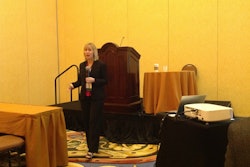In a recent survey of transportation professionals, 79 percent expected growth in their total workforce, but 58 percent of respondents thought driver staffing levels would be unaffected by the current hours-of-service regulations.
HireRight just released its Transportation Spotlight, derived from its 2014 Annual Employment Screening Benchmarking Report. The provider of DAC and other background screening employment products surveyed transportation company employees in recruiting, safety and other departments last fall.
Transportation Spotlight summarized results from 21 percent — or 638 of the 3,038 — benchmark report respondents whose primary industry was transportation. In this, segment, 92 percent or 587 respondents indicated their primary mode of business was trucking.
Echoing last year’s findings, 79 percent expected to grow their total workforce in 2014. Twenty-two percent thought this increase would be 6 percent or greater, 19 percent anticipated no change and 3 percent expected a decline.
Of those who foresaw growth in hiring, 53 percent expected to hire employees. Fifteen percent believe all or most of this increase will be filled by non-employees such as contract workers, a decrease of 8 percent from 2013.
The majority of transportation companies use contingent or contracted workers. Thirty-seven percent said 30 percent or more of their workforce was classified as non-employees, while 42 percent reported contingent workers accounted for less than 10 percent of their total workforce.
When implemented last July, experts had expected the new HOS to reduce productivity and increase driver turnover. This year, HireRight added a new survey question to measure how the trucking industry thinks the 2013 rules impact driver staffing levels.
Fifty-eight percent said staffing would be unaffected by the current rule. Nineteen percent reported having hired or planning to hire full-time drivers and 7 percent hired or expected to hire contracted drivers.
Applicant referrals were used by 74 percent to recruit drivers. Following that was online job boards (64 percent), print media (57 percent), job fairs (37 percent) and social media (25 percent).
Signing bonuses were used by 36 percent of respondents, but 35 percent reported offering no other recruitment tools. Twenty percent recruited at driving schools, while 16 percent reported customizing jobs based on an applicants’ preferred location or lifestyle.
When asked why drivers leave their company, 51 percent responded it was to make more money. Forty-one percent said drivers departed because they sought more home time, 27 left for better benefits and 22 percent retired.
Thirty-nine percent of those surveyed offered increased pay to retain drivers. Other steps reported included upgraded equipment (38 percent) and incentive programs (36 percent).
Regarding background checks, 93 percent of respondents examined driver applicants’ past three years of motor vehicle records and 88 percent verified employment history. Eighty-two percent conducted criminal background checks and 74 percent verified identity. A third paid a third-party provider for background checks and 10 percent used internal and external sources.











